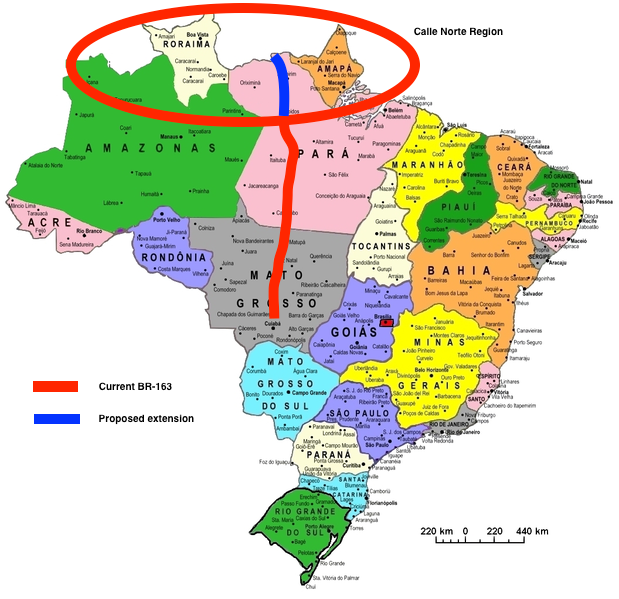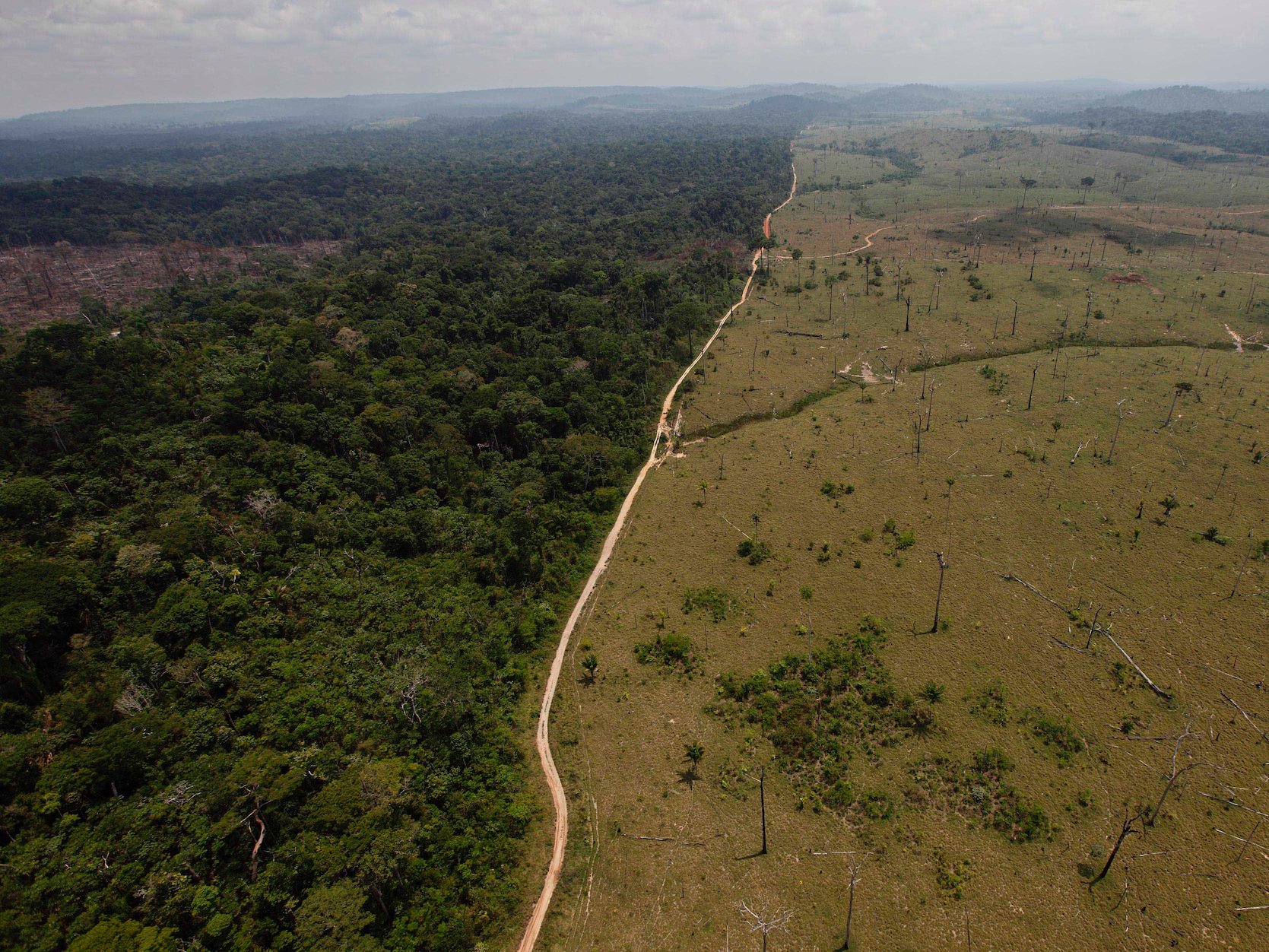- Brazilian president Jair Bolsonaro’s axe is finally starting to fall on the Amazon rainforest.
- In a January radio interview, special secretary for strategic projects Maynard Marques de Santa Rosa announced the administration’s plans for three major projects that will impact the Amazon.
- These include constructing a hydroelectric dam, building a bridge over the Amazon River, and extending an existing highway through 300 miles of rainforest, which would threaten isolated indigenous peoples.
- Santa Rosa’s rhetoric referred to the Amazon as an “unproductive latifúndio” – a large, unfarmed estate – and stressed the need to integrate this “desert-like” region into the national economy, Mongabay reported.
Brazilian president Jair Bolsonaro has quietly started to make good on his campaign promises to develop swaths of the Amazon.
Bolsonaro’s special secretary for strategic projects, Maynard Marques de Santa Rosa, announced during a radio interview that the administration is kicking off three major infrastructure projects – a hydroelectric dam, a bridge, and a highway extension – that will impact the rainforest and its indigenous peoples.
The message is clear: Bolsonaro plans to develop the Amazon, opening up areas of untouched rainforest to mining, farming, and logging.
The Amazon has lost more than 300,000 square miles of forest since 1970. That’s an area larger than the state of Texas. While the rate of deforestation has slowed since 2004, these infrastructure projects may signal an end to that decline.
'Bolsonaro is the worst thing that could happen for the environment'
Bolsonaro, who won Brazil's recent presidential election with a "tough on crime" platform that promised to jumpstart the country's stagnating economy, is also a climate science skeptic.
"There is no point sugarcoating it. Bolsonaro is the worst thing that could happen for the environment," Paulo Artaxo, a climate change researcher at the University of Sao Paulo in Brazil, told Science just prior to the election.
Brazil's highest political office comes with control over a lion's share of the world's largest tropical rainforest - what some experts call "the lungs of the planet" because Amazonian flora performs the critical function of storing carbon dioxide, preventing it from returning to the atmosphere to further warm the Earth. This is a crucial check on greenhouse gas-fueled climate change.
Brazil's commander-in-chief has made it clear that he thinks an excess of environmentally-protected areas has hampered the country's economic development.
During the election, Bolsonaro promised to pave a highway through the Amazon and open up indigenous lands to industry. He also made plans to scrap the Ministry of Environment and dilute existing environmental protections.
He's following through on the first of those promises with an umbrella project called Barão do Rio Branco, named after a 19th century Brazilian diplomat who resolved border issues with neighboring regions.
The Amazon project includes a dam, a bridge, and an extended highway
First, the administration plans to construct a hydroelectric dam and power facility on the Trombetas River, which flows into the Amazon, and abuts a nearby biological reserve more than 1500 square miles in size.
Building the dam is an attempt to cut down on frequent power outages in nearby cities, according to Santa Rosa.
Bolsonaro also wants to build a nearly mile-long bridge over the Amazon River in the city of Óbidos, located northwest of Santarém in the heart of the rainforest.

Finally, Santa Rosa confirmed the government will extend an existing highway named BR-163, which cuts through the heart of Brazil, connecting graineries in the central valley to the Amazon River some 2,700 miles north.
BR-163 is already a critical roadway for Brazilian exports. Agricultural producers use BR-163 to transport soy and other grains to major ports on the Amazon River, where the soy is then transferred to ships and sent down the river for export to Europe, according to Mongabay.
It's unclear how an extension north through the rainforest from the highway's current terminus will further contribute to increased soy exports, however.
Though Santa Rosa didn't indicate the precise route, the BR-163 extension will likely cut through five protected areas in the Amazon. This could include the 16,400 square-mile Grão-Pará Ecological Station, one of the largest fully-protected tropical forest conservation units in the world.

Santa Rosa sidestepped queries about the project's timeline and implementation, stating the president first had to issue a bill that instituted Barão do Rio Branco as an official project. He also didn't mention how to foot the likely billion-dollar bill.
Bolsonaro thinks the Amazon is a 'vast unfarmed tract of land' to develop
Santa Rosa said the proposed projects are intended to benefit local Brazilians. He added that integrating Brazil's somewhat isolated Calha Norte region - everything north of the Amazon River to the Suriname and Guyanese borders - with the rest of country via these projects will create employment and economic opportunities.
"The Amazon population has 10 million people living below the poverty line and it is not acceptable to close our eyes to this region and treat it as an unproductive latifúndio," he said in the radio interview. Latifúndio means a "vast unfarmed tract of land."
Robert Walker, professor at the University of Florida and the Federal University of Pará in Brazil, told Business Insider that this new project is designed to reactivate an earlier, unfinished plan from the 1980s called Calha Norte. The plan aimed to incorporate the region into the national economy and forcibly integrate indigneous groups into Brazilian society.

Walker also noted that three projects will be built in areas rich with natural resources. The Trombetas River, where the hydroelectric dam will be built, passes through a region with abundant reserves of bauxite, he said. Bauxite is used in the production of aluminum.
The bridge and highway are being built in the state of Pará, Walker said, and meant to better integrate the isolated state of Amapa with the national economy.
Until now, "Amapa has remained undeveloped, a vast reservoir of biodiversity," he said.
But the Amapa-Pará border is home to the National Reserve of Copper and Associates (RENCA), a 17,760 square-mile piece of land rich in copper and other mineral resources. Former Brazilian president Michel Temer opened the once-protected area to commercial mining in 2017. A highway leading to and from RENCA could enable Brazil to more effectively mine those resources.
By extending the highway an additional 300 miles northward, BR-163 would effectively connect Amapa and Brazil's northern border with the country's central grain-producing region.
One of the other benefits of the highway, according to Santa Rosa, "is integrating this region that was desertic so far."
Walker thinks that the location of the proposed infrastructure provides circumstantial evidence that Bolsonaro is prepared to surrender large tracts of the Amazon to mining interests.
'The attack on the Amazon' has begun
The project announcement came just days before Bolsonaro took the stage at the World Economic Forum in Davos, Switzerland on January 22.
"Brazil is a paradise, he said at Davos, according to Quartz. "We are the one country that most preserves the environment."
Bolsonaro said his goal is to balance environment and biodiversity with economic opportunities. But Walker was quick to point out that the Barão do Rio Branco plan is far more consistent with the statements Bolsonaro made during his campaign - that he would open the Amazon to development despite environmental laws and commitments to indigenous peoples - than his statements at the World Economic Forum.

The three projects will impact local Amazonian tribes in addition to the rainforest itself. The Trombetas dam would impact four indigenous reserves and eight quilombos (communities founded by runaway slaves), Mongabay reported.
The location of the road project on BR-163 also signals a continued assault on the homeland of the Munduruku Tribe, Walker said. The Munduruku number less than 5,000 and have claim to land in the States of Pará and Mato Grosso.
"I think we are headed for a very dark period in the history of Brazil," the University of Sao Paulo's Artaxo told Science.
"The attack on the Amazon anticipated with Bolsonaro's election has begun," Walker said.

